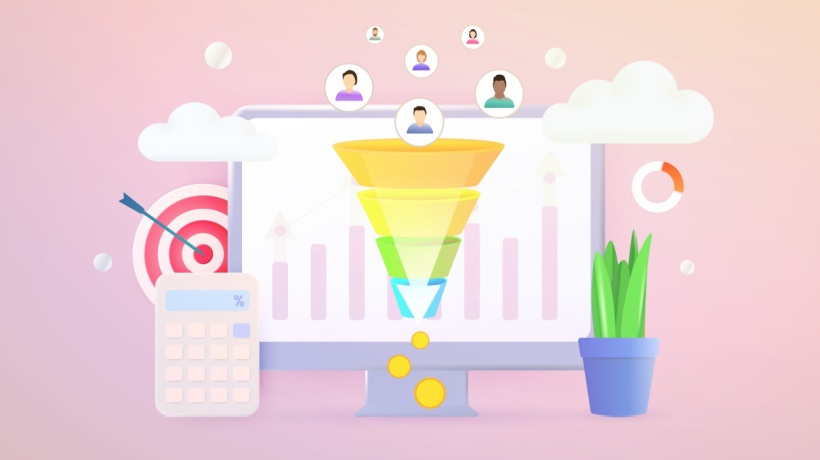Sales Enablement Solutions
In the present intricate and competitive business environment, companies are realizing that the success of sales is no longer being led by the salesperson's charming personality or their persistent nature only—it is being led by their knowledge, agility, and continuous learning. Indeed, buyers today are much more aware than before, decision cycles have become lengthier, and competition is fiercer than ever. This scenario poses a strategic challenge for Learning and Development (L&D) professionals–the challenge of influencing business growth directly by implementing sales enablement instruments that coordinate learning with the attainment of performance goals.
In This Article, You Will Find...
- Understanding Sales Enablement Solutions
- Why L&D Professionals Should Care About Sales Enablement
- Core Components Of An Effective Sales Enablement Solution
- The Measurable Impact Of Sales Enablement
- What L&D Can Do To Ensure The Success Of Sales Enablement
- Strategies To Surmount Sales Enablement Challenges
- The Future Of Sales Enablement In Corporate Learning
Understanding Sales Enablement Solutions
To put it simply, sales enablement solutions are the amalgamation of systems, processes, and tools that a sales team can use to be empowered with the right knowledge, skills, content, and insights to attract prospects successfully and to close deals. These solutions help the sales team to use what they have learnt in the training indirectly by having the learning embedded in the sales workflow. From the perspective of an L&D staff member, sales enablement is far beyond merely organizing a workshop or an eLearning course. It constitutes:
- Individualized learning programs for salespeople in various stages of their professional growth.
- Short learning lessons and training simulations based on real-life situations for user skills.
- Training and feedback loops for continuous skills development.
- Reports and tools for measuring business performance that show a direct link between learning and business metrics.
In fact, the focus is on providing learners with easy access to learning, which is also very relevant and can be acted upon immediately, which is how the training provided can be transformed into tangible performance improvement.
Why L&D Professionals Should Care About Sales Enablement
Conventionally, sales enablement has been considered a function managed by the sales or marketing teams. Nevertheless, as organizations are progressively realizing that knowledge and behavior are the main drivers of performance, the role of L&D has turned into the most crucial one. These are the reasons why learning leaders have to be the first to support enablement:
- Bridging learning and performance
Sales enablement is the tool by which the knowledge given in the training sessions is translated into measurable results such as better conversion rates, shorter sales cycles, and increased deal values. - Accelerating onboarding and productivity
An enablement platform allows for a well-orchestrated onboarding program, which enables new employees to get up to speed quicker. As per the studies conducted, organizations that implement structured enablement processes can see their onboarding time lowered by as much as 30% when compared to traditional training methods. - Ensuring continuous learning and reinforcement
In rapidly changing markets, features of the products, pricing, and competitors' strategies are changing fast as well. Thus, enablement initiatives can keep sellers up to date without bombarding them with info. - Demonstrating business value of L&D
By aligning learning initiatives with sales KPIs, L&D gets the opportunity to show strong Return On Investment, thus shifting training from a cost center to a revenue enabler.
Core Components Of An Effective Sales Enablement Solution
For L&D professionals who are either planning or optimizing the strategies of enablement, it is very important to understand the foundation of a solid solution.
1. Learning Centric Design
Sales enablement should not represent a set of content assets only, but rather a carefully planned learning journey. The use of microlearning, simulations, and role-playing should be aimed at changing behavior rather than solely increasing theoretical knowledge.
2. Content Management And Accessibility
Centralized libraries of sales collateral, playbooks, and case studies give sellers the opportunity to quickly locate and use the most up-to-date material in face-to-face interactions with customers. Besides this, the integration of CRM tools can be ensured, for the easy access during the live sales talks.
3. Coaching And Mentoring Framework
A pivotal role reinforcement is through manager coaching. Platforms which come with coaching templates, feedback modules, and peer collaboration features allow manager coaching to become a long-term skills development source.
4. Analytics And Performance Tracking
Contemporary sales enablement systems feature the inclusion of analytics that go beyond merely tracking course completion; they also measure engagement impact, conversion improvements, and sales cycle efficiency. This data is very valuable for L&D as they help align the upcoming training with the actual business needs.
5. Integration With Technology Ecosystem
The enablement platform, which can smoothly integrate with the CRM, communication tools, and the Learning Management System (LMS), will provide a seamless learner experience and lessen operational inconveniences.
The Measurable Impact Of Sales Enablement
Many of the outcomes from sales enablement are measurable and data-driven:
- The implementation of sales enablement programs enables organizations to increase their win rates by up to 15% as compared to those that have not structured enablement.
- Formal enablement strategies lead to companies enjoying a 34% increase in the productivity of sellers and also a 29% increase in the speed of new hires generating revenue.
- Sales teams which embrace continuous learning and coaching tools are twice as likely to meet their quotas as compared to those which solely depend on traditional training.
Such figures emphasize a single fundamental point—enablement yields the best results when L&D and sales coordinate to integrate learning into the routine selling activities.
What L&D Can Do To Ensure The Success Of Sales Enablement
Working on a sales enablement plan is more than just having a new software; what you are actually doing is preparing the environment in which learning and performance will blossom. The following are actionable steps for the L&D team to take:
1. Conduct A Performance Diagnosis
The very first step in solving the problem is understanding the gap between the existing behavior of the sales team and their future performance. You can use performance data, customer feedback, and the words of the sales manager to understand which competencies will bring the highest results.
2. Build Role-Based Learning Pathways
The staff members who extend the company's business by bringing in new clients and those who maintain the relationship with existing customer obviously need different skillsets. Creating modular learning paths which are function-specific and sales scenarios from the real world will be of great help.
3. Foster A Coaching Culture
Provide supervisors with the practice and tools to coach efficiently. Continuous reinforcements, positive feedback, and behavioral observation are amongst the main factors responsible for long-term improvement.
4. Align Learning Metrics With Business KPIs
Rather than focusing on completion rates, learning departments should pay more attention to performance metrics including win ratio, deal velocity, and customer satisfaction. The direct impact of L&D on revenue will thereby become visible.
5. Encourage Collaboration Between Teams
L&D, marketing, and sales teams working together will be beneficial in terms of ensuring the consistency of the message, the accuracy of content, and its relevance to the current market situation.
6. Leverage Technology For Real-Time Learning
With the help of AI-driven suggestions, short learning pieces can be directly integrated into the sales process: communication via chat can be used to gently remind about tasks and quick refresher modules can be downloaded from a mobile device. You can learn anytime and anywhere.
Strategies To Surmount Sales Enablement Challenges
While the advantages seem to be very attractive, obstacles may arise when it comes to the deployment of sales enablement solutions:
- Siloed ownership
Misalignment between L&D and sales can lead to a lack of understanding of the distribution of responsibilities. The answer is to set joint objectives and integrated performance dashboards. - Low adoption of tools
Users of complex or poorly designed systems rarely put them to good use. To get the users interested in the platform, you should choose user-friendly platforms and invite sellers to the design phase. - Content overload
Having too much content can lead to the same result as having too little. Instead of focusing on the amount, pay attention to the quality, the context, and the time of the delivery. - Measuring ROI
A lot of organizations find it hard to connect learning with revenue. To close the circle, you should put in place the analytics which measure both learning progress and sales performance.
The Future Of Sales Enablement In Corporate Learning
Workforce enablement is going to be influenced by AI, data personalization, and predictive learning analytics. Using AI, systems will be capable of going through sales call records, pointing out the best fitting learning path for individual use cases as well as pinpointing improvement areas through the analysis of performance data updated in real time. Learning technologies such as Augmented Reality, Virtual Reality, and experience through simulations are giving sellers the opportunity to rehearse negotiation and objection-handling in lifelike settings. Thus, learning becomes more engaging and effective. For L&D professionals, this change is a huge chance to redefine their effect—going beyond just being learning facilitators to becoming the architects of revenue enablement.
Conclusion
In a nutshell, sales enablement solutions stand behind the modern learning strategies of revenue teams. They connect the dots between knowledge acquisition, behavioral change, and measurable business outcomes. For L&D professionals, embracing these solutions means shifting from conventional training delivery to a performance-driven learning ecosystem.
Organizations can, through the integration of structured learning, coaching, analytics, and continuous feedback, not only empower their sales force to meet the targets but also to exceed them. In a time when being agile is what determines business success, sales enablement solutions should not be regarded merely as a sales tool—they are in fact a strategic growth engine for any organization that is performance-through-learning oriented.








